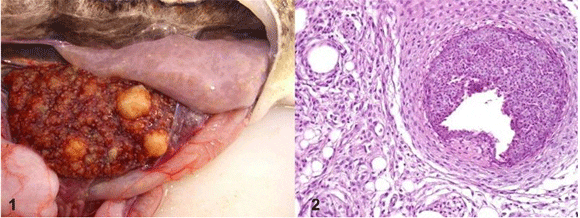The results of this research will improve diagnostic accuracy and indirectly help to prevent disease in farmed cod.
The cod farming industry faces major challenges relating to high mortality rates in fry, precocious sexual maturation and various infectious and non-infectious diseases. Tissue changes in diseased cod have been found to differ from those prevalent in salmon, and in order to diagnose diseased cod correctly, we need a more detailed understanding of how the fish respond to disease, based on an examination of diseased tissue under a microscope.
Mona Gjessing has studied several diseases commonly found in farmed cod and has characterised typical changes that their tissue undergoes as a result of these diseases. She found that the changes in the later stages of the diseases are very similar to one another, irrespective of the cause. She also discovered that there were even surprisingly large pathological changes in fish that appeared to be clinically healthy.
Gjessing examined cod injected with a vaccine excipient, which causes inflammation without a live infectant, and also cod infected with bacteria, fungi and viruses respectively. In one experiment, Gjessing studied the reaction to the bacteria Francisella noatunensis, which causes the disease francisellosis and is a serious threat to the cod farming industry. The reactions to fungal and viral infections were studied using material from cod whose inner organs were affected by fungal infection and from cod infected by the nodavirus. This virus affects the brain and eyes and can lead to serious illness in a number of marine species, particularly in fry.
Examination by light microscopy of tissue from advanced stages of the disease in fish which had been given a vaccine excipient or were infected by bacteria or fungi all showed pathological changes which had certain features in common: circular formations consisting of accumulations of inflamed cells organized in layers. The cause of these pathological changes (i.e. the vaccine excipient, bacteria or fungi) was visible inside the inflamed nodules. One surprising find was serious inflammation of the brain and eyes due to the nodavirus in fish that did not otherwise show any sign of disease. By means of in situ hybridisation, Gjessing also detected visible gene expressions which are important for cods resistance to disease.
All in all, Mona Gjessings research confirms that cod react differently to pathogens than salmon do. Different diseases result in quite similar changes in tissue and the detection of infectious agents in the inflammatory nodules is necessary in order to discover the cause of the disease. If pathogens were only present in isolated nodules, this would explain why cod do not appear to be diseased, even though they may have a surprising number of such nodules.
The doctoral research was carried out at the Norwegian Veterinary Institute. Researchers and fellows at the Faculty of Biosciences, Fisheries and Economics at the University of Troms were key collaborators on the project.
DVM Mona Gjessing defended her doctoral research on 22 March 2012 at the Norwegian School of Veterinary Science (NVH) with a thesis entitled Morphological characterisation of inflammatory responses in Atlantic cod.

Figure 2: An inflamed nodule as seen through a microscope.
April 2012


